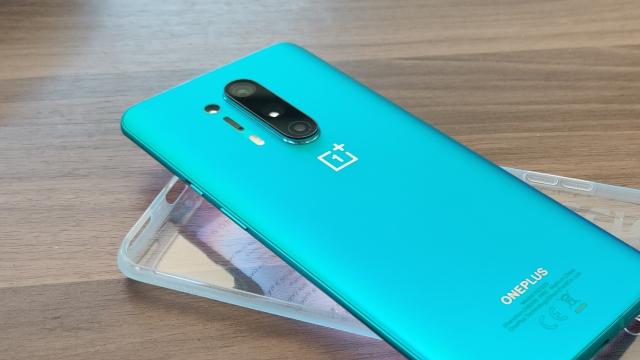There’s not much happening in the phone world right now, and barring the rumours and leaks about what may or may not be coming later this year, the biggest news of the week seems to be the OnePlus 8 Pro’s fourth camera lens. You know, the one that has been dubbed the ‘x-ray camera’ on account of it being able to see through thin clothes and some electronics with thin plastic and little to no IR shielding. Because it’s creepy that a camera can do that without much in the way of specialised or expensive equipment.
OnePlus has already said this particular feature would be removed from the China-only Hydrogen OS via an update later this week, with a global update to the international OxygenOS in the near future. The change has been described as temporary by the company, while it looks into solutions to get the same effect without the ability to see through certain items of clothing. Really though, there’s a lesson phone companies should take from this: stop using multiple cameras for stupid gimmicky purposes.
For those that forgot, or didn’t already know, one of the differences between the OnePlus 8 and the 8 Pro is that there’s a fourth camera on the Pro model. A fourth camera that functions as a photochromic lens that lets you add a weird, washed out filter to your photos. Essentially it’s a camera lens whose sole function is making your photos look worse, and as I mentioned in my review it’s utterly pointless. The most pointless thing OnePlus has done in recent years, in fact; even more so than the curved screens that have zero practical use.
But here’s the thing: ever since multiple camera lenses first hit the scene, all the phone companies seem to have been in a race to keep up with one another. In some cases those extra lenses make some logical sense, like a telephoto lens for optical zoom, ultra wide angle lenses to get more stuff into frame, and so on. But it didn’t take long for it to be race to see which phones could have more lenses on the back. Two, three ” there’s even a Nokia phone with five lenses on the back. While reception to the Nokia 9 Pureview’s camera was mostly positive, time and again this sort of thing comes across as a numbers game.
You can’t help but feel that boardroom discussions must go something like: “Apple just launched a phone with two cameras, better make sure ours has three”, or “Samsung has four cameras on the back, so we better stuff an extra one in there too”.
It’s meaningless if that extra lens doesn’t actually do anything worthwhile – as was the case with the OnePlus 8 Pro’s photochromic lens. It just made your photos look shit and, as it turns out, lets you spy on some people if they’re wearing the right kind of clothes. Then there’s things like the Time of Flight sensors employed by the likes of Samsung and Huawei, which supposedly add more to the depth-sensing capabilities of the camera but don’t actually matter.
I often wonder how many people outside of boardrooms and marketing firms actually care about these extra lenses. Despite the propaganda phone companies commission to justify their latest camera gimmick (often involving some sort of allegedly-famous photographer), I’d have a hard time believing that anyone who actually cared about having the absolute best quality of their photos would use a smartphone camera. Heck, how many times has Huawei been caught trying to pass off DSLR photos as something made by its own devices? At least twice.
That’s not to say extra lenses are a bad thing. My current phone has three, and I do find myself using the ultra wide angle lens quite regularly. It may warp the photo a little bit if you look carefully, but sometimes you just can’t get everything you need in shot on the standard lens. And smartphone zoom has historically been rather atrocious, so any help you can get is going to be beneficial. Even if I don’t actually use the zoom that much.
And smartphones are convenient. A hell of a lot more convenient than a big bulky camera, which my now-dusty 11-year old DSLR can attest to. If those extra lenses mean better pictures, then I’m all for it. Just no more lenses for the sake of it.
What’s that Time of Flight sensor actually adding for everyday users except for an increased pricetag? Outside of very niche situations, do we really gain much from real-time bokeh effects or measuring stuff with AR? And why have a fourth lens if all it offers is meagre gimmick? Is it really worth it if it does effectively fuck all? Why add extra lenses for no reason other than to boost your own spec sheet?
It’s fine to have less, provided the less you have is worth a damn. Adding unnecessary hardware doesn’t help anyone, especially after you end up disabling that feature because you didn’t properly anticipate the consequences. It’s been somewhat of an issue for a couple of years, but now we can finally see at least one consequence of a half-baked extra lens that had no good reason to be there.
Focus on the picture quality, not the number of cameras and the extra bullshit they claim to do.
This post originally appeared on Gizmodo UK, which is gobbling up the news in a different timezone.
